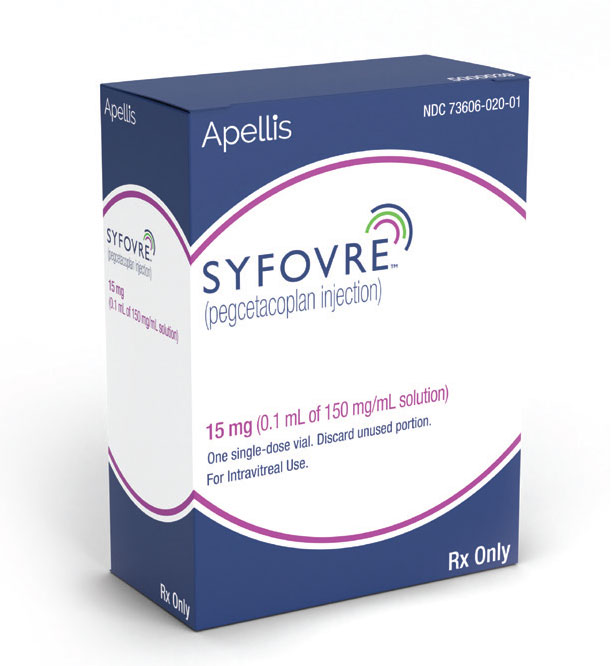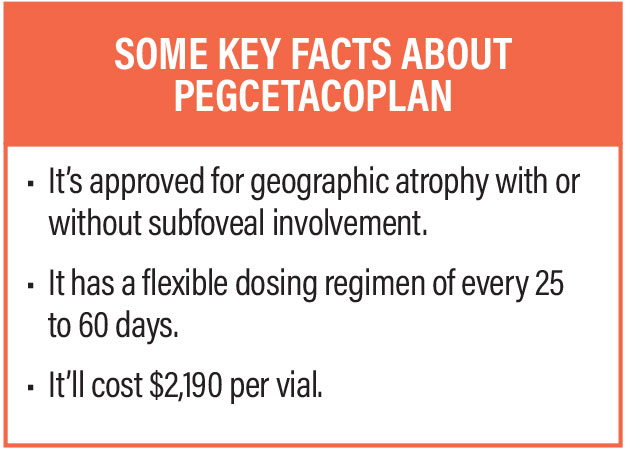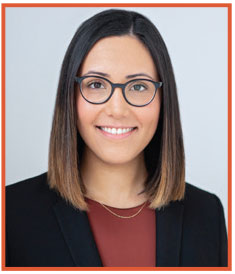 |
Pegcetacoplan injection (Syfovre, Apellis Pharmaceuticals) is launching with a high awareness among ophthalmologists, according to a pulse study conducted shortly after the drug’s historic approval.
However, it seems retina specialists are taking a nuanced approach to using the new treatment in their practices, the study, which Spherix Global Insights conducted, found. And even with the approval, not all retina specialists will be embracing the new treatment with open arms.
Issues with pegcetacoplan
Demetrios Vavvas, MD, PhD, associate retina service director at Massachusetts Eye and Ear in Boston, has been a vocal critic of the new treatment. Among the key findings from the pivotal OAKS and DERBY trials that Dr. Vavvas takes issue with:
The reported 20 percent reduction across the monthly (PM) and every-other-month (PEOM) treatment arms. Dr. Vavvas says the actual reduction is 7.4 percent, and that the reported reduction is based on predicted lesion growth.
Pegcetacoplan offers no meaningful benefit for best-corrected visual acuity. He notes that BCVA declined about seven letters in sham eyes, about eight letters in the PM arm and about nine letters in the PEOM group.
The 12.2 percent of PM eyes that converted to neovascular, or exudative, age-related macular degeneration at two years, is about four times the rate in the sham group and almost double the rate of PEOM eyes.
But two OAKS/DERBY investigators take issue with his interpretation of the results.
 |
Different views of results
“The reductions in GA lesion growth of 21 percent with pegcetacoplan every month and 17 percent with every-other month are actual reductions vs. sham over 24 months,” says Sunir Garg, MD, codirector of retina research at Wills Eye Hospital, Philadelphia, and an OAKS/DERBY investigator. The model for calculating that reduction, the mixed effects model for repeated measures (MMRM), “is a well-accepted statistical model for assessing longitudinal data.” He notes that pivotal trials for lampalizumab and faricimab used the same modeling.
Dr. Garg adds that when patients with nonsubfoveal lesions were segregated from the overall cohort, the GA area reductions were even more robust: 26 percent with PM and 22 percent with PEOM treatment.
With regard to the rates of eAMD, Philip Ferrone, MD, a retina specialist in Great Neck, N.Y., says they’re similar to the conversion rates with other complement inhibitors. “In OAKS/DERBY, eAMD rates are higher with PM than with PEOM, but when comparing rates at one year of pegcetacoplan vs. those of other complement inhibitors, the rates are the same—approximately 6 percent with monthly dosing. The one-year rate with PEOM dosing, however, is lower—4.1 percent.” At two years, the conversion rate more than doubled in the PM group.
He notes the “vast majority” of OAKS/DERBY patients that converted to eAMD had treatment with anti-VEGF agents. “The average number of injections per month following the diagnosis of eAMD was approximately 0.5, or one injection every two months, with no difference in pegcetacoplan-treated and sham patients,” Dr. Ferrone says.
Who benefits? It depends
Obviously, the three retina specialists have differing views on who would benefit from the treatment. Dr. Vavvas says he won’t offer pegcetacoplan to any patient. “So if a patient comes in and asks you, ‘Will I see any benefit?’ the answer is no,” he says. “There is no improvement in any symptoms or quality of life or any functional index that was tested.”
Dr. Garg points out that OAKS/DERBY showed efficacy in all lesion types. “The nonsubfoveal subgroup had even more robust effects, with a 26 percent reduction with monthly and 22 percent reduction with every-other- month treatment,” he says.
Dr. Ferrone concurs, noting that OAKS/DERBY enrolled “a broad population of GA patients.”
The Spherix Global Insights study reports that surveyed ophthalmologists are most inclined to use pegcetacoplan in patients with significant vision loss in one eye and foveal involvement in the other. However, they’re less confident about using it in eyes that also have eAMD, citing wariness about the idea of two intravitreal injections in the same eye on the same day.
And so the ascent of the learning curve for pegcetacoplan begins. RS
Dr. Vavvas has no relevant disclosures. Dr. Garg and Dr. Ferrone are investigators for Apellis.
— Richard Mark Kirkner
Retina Specialist editorial board welcomes two new columnists
Retina Specialist magazine has expanded its editorial board with the addition of two new columnists. They are:
 |
Tina Felfeli, MD, an ophthalmology resident at the University of Toronto and a long-time contributor to the “North of the Border” column, has taken over as department editor of “Surgical Video Pearl,” picking up where Paul Hahn, MD, PhD, leaves off after launching the column eight years ago.
 |
Jayanth Sridhar, MD, an associate professor of clinical ophthalmology at Bascom Palmer Eye Institute, Miami, joins as the magazine’s Social Media Ambassador. He’s also taking over the “Social Media Specialist” column that David R.P. Almeida, MD, PhD, MBA, had penned for the past four years.
Dr. Hahn and Dr. Almeida will continue on as editorial board members.
In Brief The Food and Drug Administration has accepted 8-mg aflibercept (Regeneron Pharmaceuticals), otherwise known as high-dose aflibercept, for priority review for the treatment of age-related macular degeneration and diabetic macular edema. The FDA has set a target action date of July 27, 2023. The FDA also approved Eylea, the 2-mg formulation of aflibercept, for treatment of retinopathy of prematurity in preterm infants. It’s the first FDA-approved anti-VEGF treatment for the disease. The Centers for Medicare and Medicaid Services has granted a new product-specific Q code for Cimerli (Coherus BioSciences), a ranibizumab biosimilar. The Q-code will be effective on or after April 1, 2023. The first patient has been dosed in the trial of FT-002 (Frontera Therapeutics), a gene therapy for treatment of X-linked retinitis pigmentosa. |



